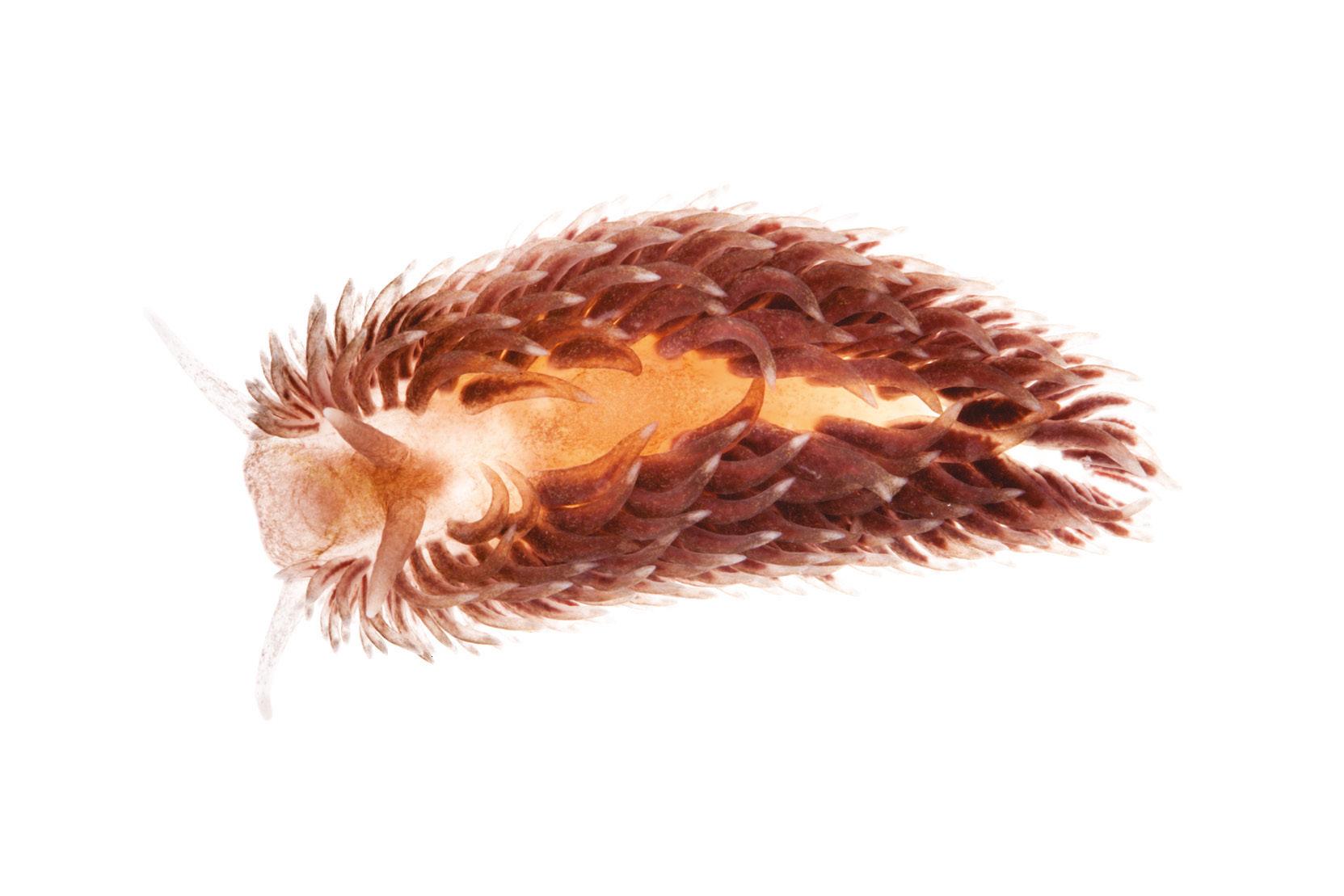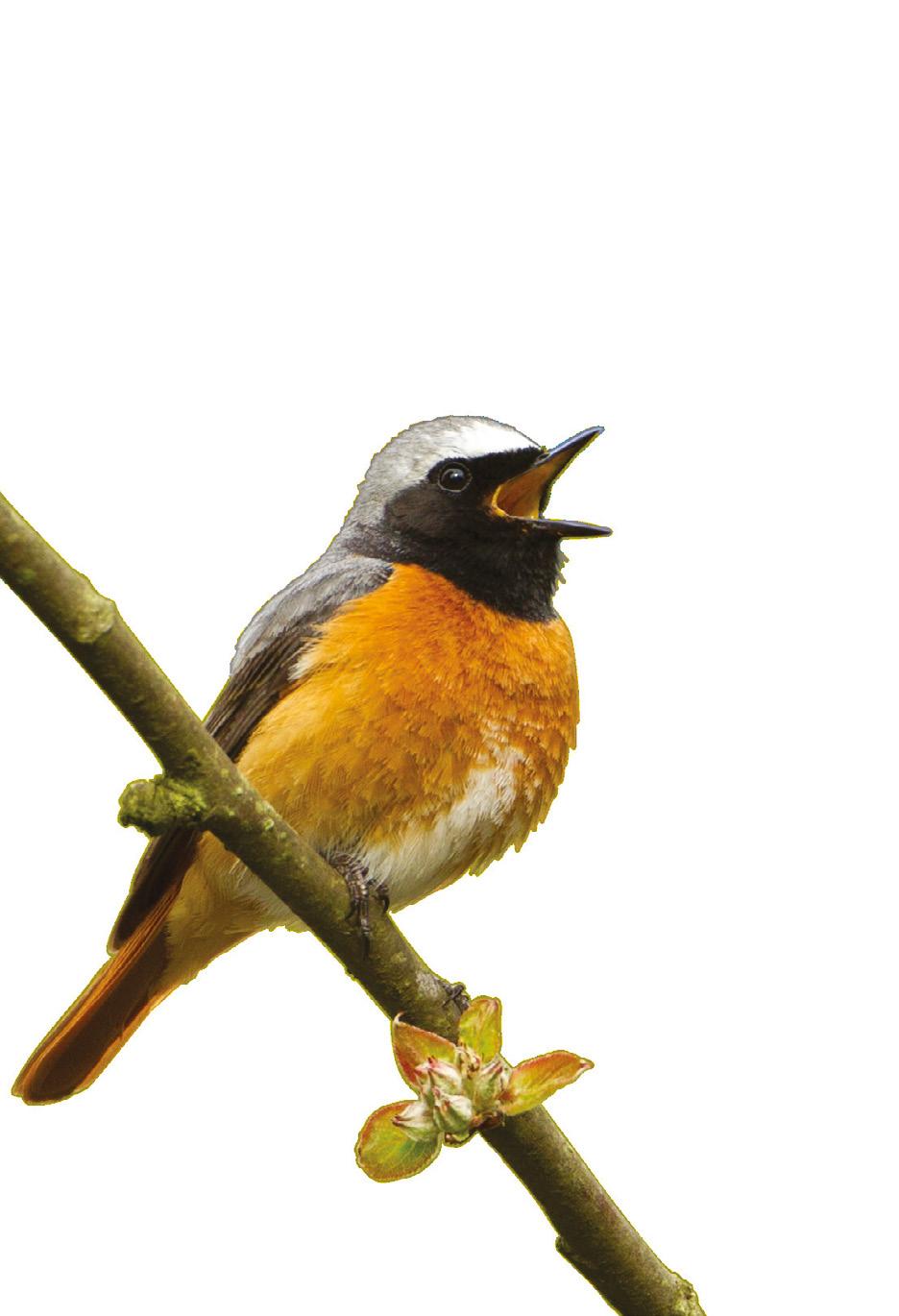
4 minute read
Restoring Britain’s Rainforests in partnership with Aviva
The Wildlife Trusts care for a network of Atlantic rainforest nature reserves. These beautiful sites, from the Dart Valley in Devon to Pengelli Woods in Pembrokeshire, or Shian Wood near Oban, Scotland, are incredibly important for wildlife, but also for people. We know that the simple enjoyment of wonderful greenspace is more than just fun – it has a medical value, reducing stress and increasing exercise, in turn reducing cost to the NHS. This is an ecosystem service of immense value. Another valuable ecosystem service is carbon, and that’s where The Wildlife Trusts’ new rainforest programme comes in.
Aviva are on a journey to net zero that they hope to achieve in the 2040s. They are making great strides to reduce their direct emissions, but also want to reduce their indirect emissions within their investment portfolio. They have strong plans but struggle to identify the last part of the journey –the technical solutions are not quite in place. For this, they aim to insure themselves by investing in a nature-based way to suck carbon out of the atmosphere and put it back into nature over the next few decades, counter-balancing any remaining indirect emissions in the 2040s. By donating funds to The Wildlife Trusts to establish new Atlantic rainforest nature reserves in the 2020s, Aviva is investing in both climate solutions and the many other benefits of nature reserves.
Advertisement
This represents a rachet up of ambition for The Wildlife Trusts as we focus on the intensifying climate and nature emergency before us. We know our marginal soil farmers are going to struggle as agricultural subsidies reduce and new trading relationships allow importation of lamb and beef that is cheaper to produce elsewhere. Planting new rainforests might be part of the answer as we seek a just transition for farming on the western fringe. If meat production is no longer economic, agro-forestry (very low intensity grazing producing conservation grade meat) tied to nature tourism and carbon payments might provide a better prospect for the next generation of farmers.
April Windle is a naturalist with a particular interest in lichens, especially those occupying the temperate rainforest habitats of Britain and Ireland. She also Chairs the Education & Promotions Committee for the British Lichen Society. @aprilwindle @aprilwindle.nature
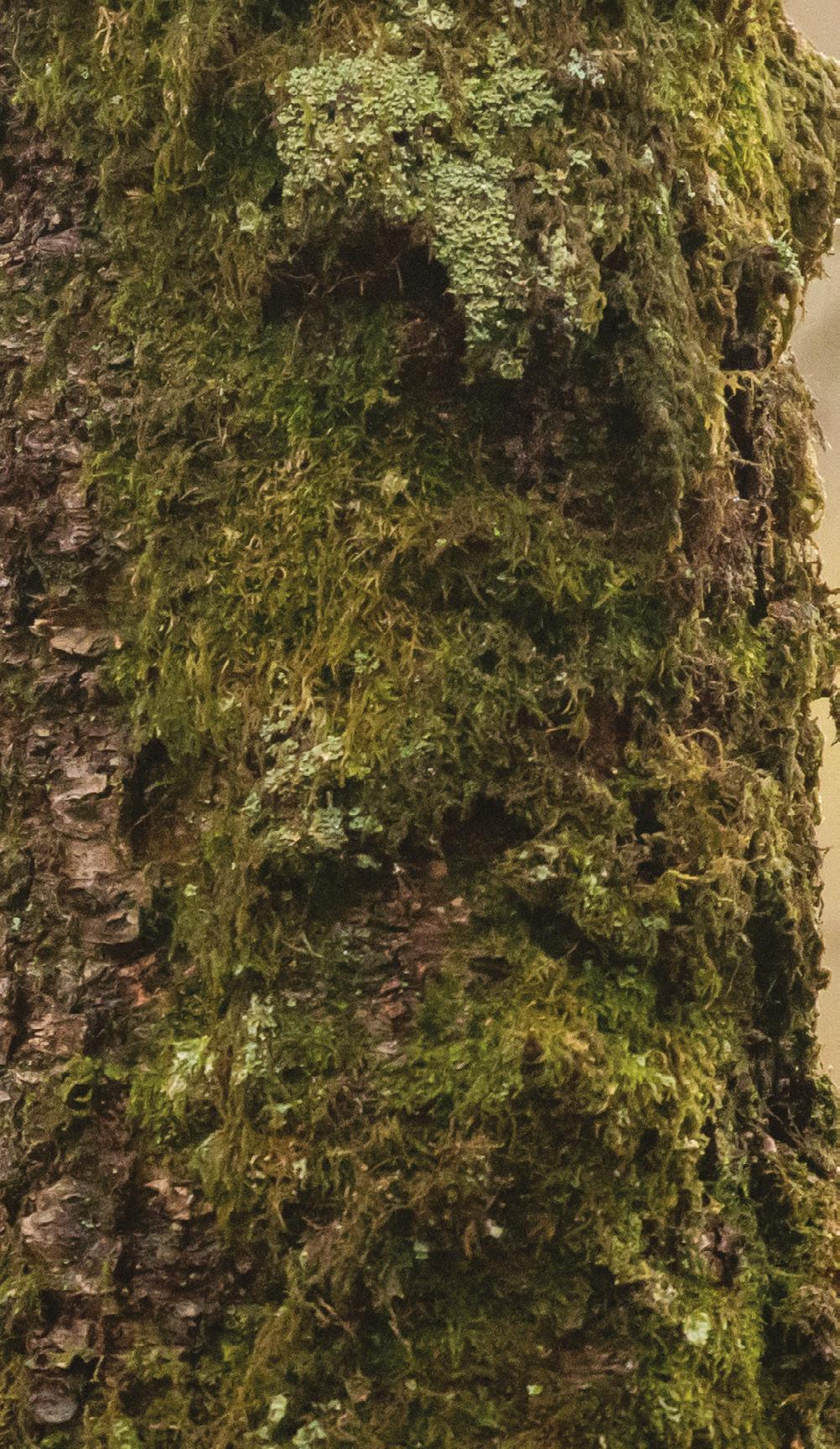
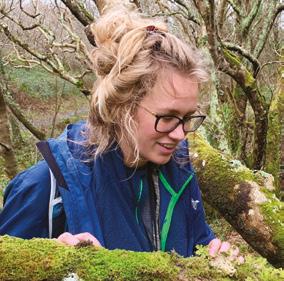
By working with partners – farmers and other nature conservation bodies, especially Plantlife and the Woodland Trust in this case, we can create a grand alliance to restore the lost rainforests of the west. This April, we announced the first two sites to benefit from this programme. Creg y Cowin on the Isle of Man will see over 70 acres planted with native tree species, with around 20 acres allowed to regenerate naturally. Manx Wildlife Trust anticipates the return of redstarts and other oakwood birds, whilst the rainforest will also increase water purity for a nearby reservoir and help with flood prevention. At Bryn Ifan in Gwynedd, North Wales Wildlife Trust aims to establish over 100 acres of rainforest, through a mix of sympathetic native planting and natural regeneration.
Find out more about this special habitat at wildlifetrusts.org/rainforest
Delicate, vibrant, enchanting: these might not be words you normally associate with slugs, but sea slugs have no respect for normal. There are several groups that you may come across on UK shores and even the most familiar looking of these, the sea hares, are quirky. These plump brown slugs have tall ear-like rhinophores (scent-sensitive tentacles) and a hidden shell. They lay a tangle of eggs that resemble pink spaghetti and produce a ‘smoke-screen’ of violet ink if disturbed. The solar powered sea slug, on the other hand, belongs to the sap-suckers group. It eats seaweed, retaining the photosynthesising parts – the chloroplasts – in its body, where they supplement the slug’s diet with sugars, like a built-in snack bar.
The largest group of sea slugs, the nudibranchs, are the strangest and most visually stunning of all. With dozens of species to be found in our rock pools and shallow seas, they have become my delight and obsession.
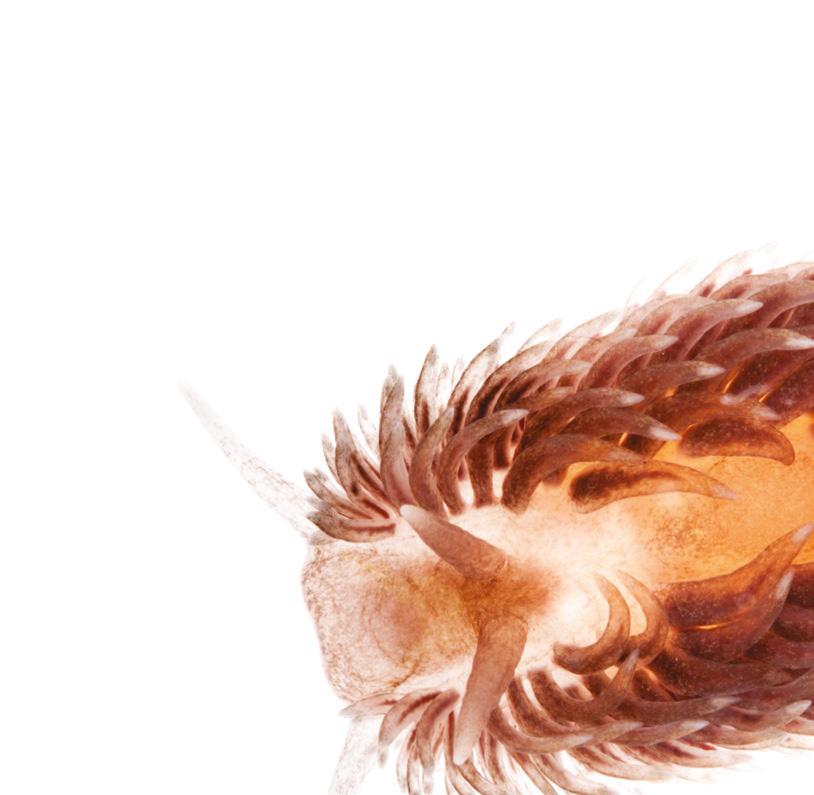
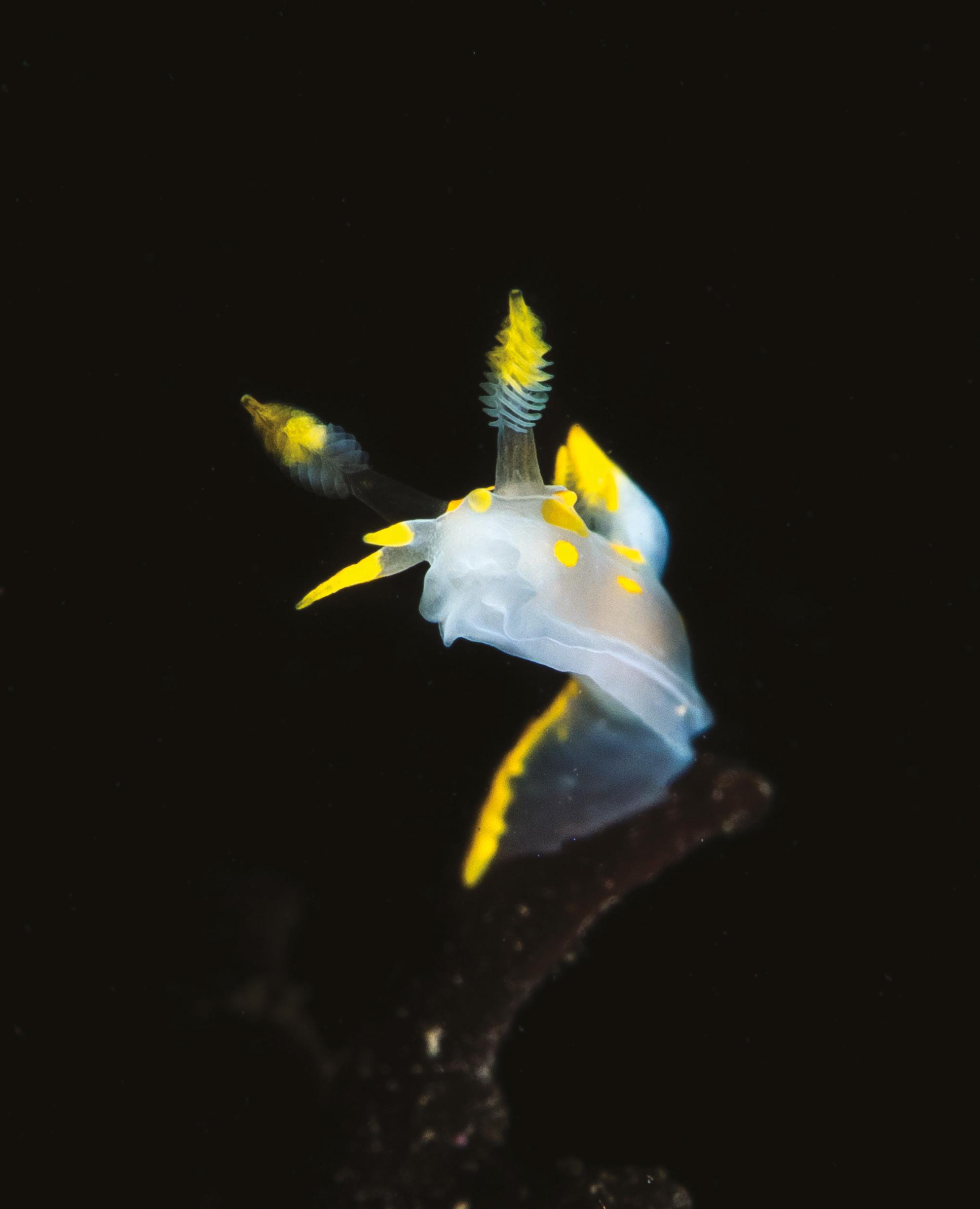
Heather Buttivant is a Cornwall Wildlife Trust volunteer, proud ‘nudi’ fanatic and author of the award-winning blog, cornishrockpools.com
She has published two books: Rock Pool and Beach Explorer.
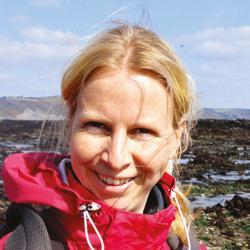
Gills and frills
Nudibranchs, or ‘nudis’, as they are affectionately known by their evergrowing fan club, are shell-less sea slugs. Their name comes from the Latin, nudus branchia, meaning ‘naked gill’. Nudibranchs are a flamboyant bunch, so they turn their gills into stylish accessories.
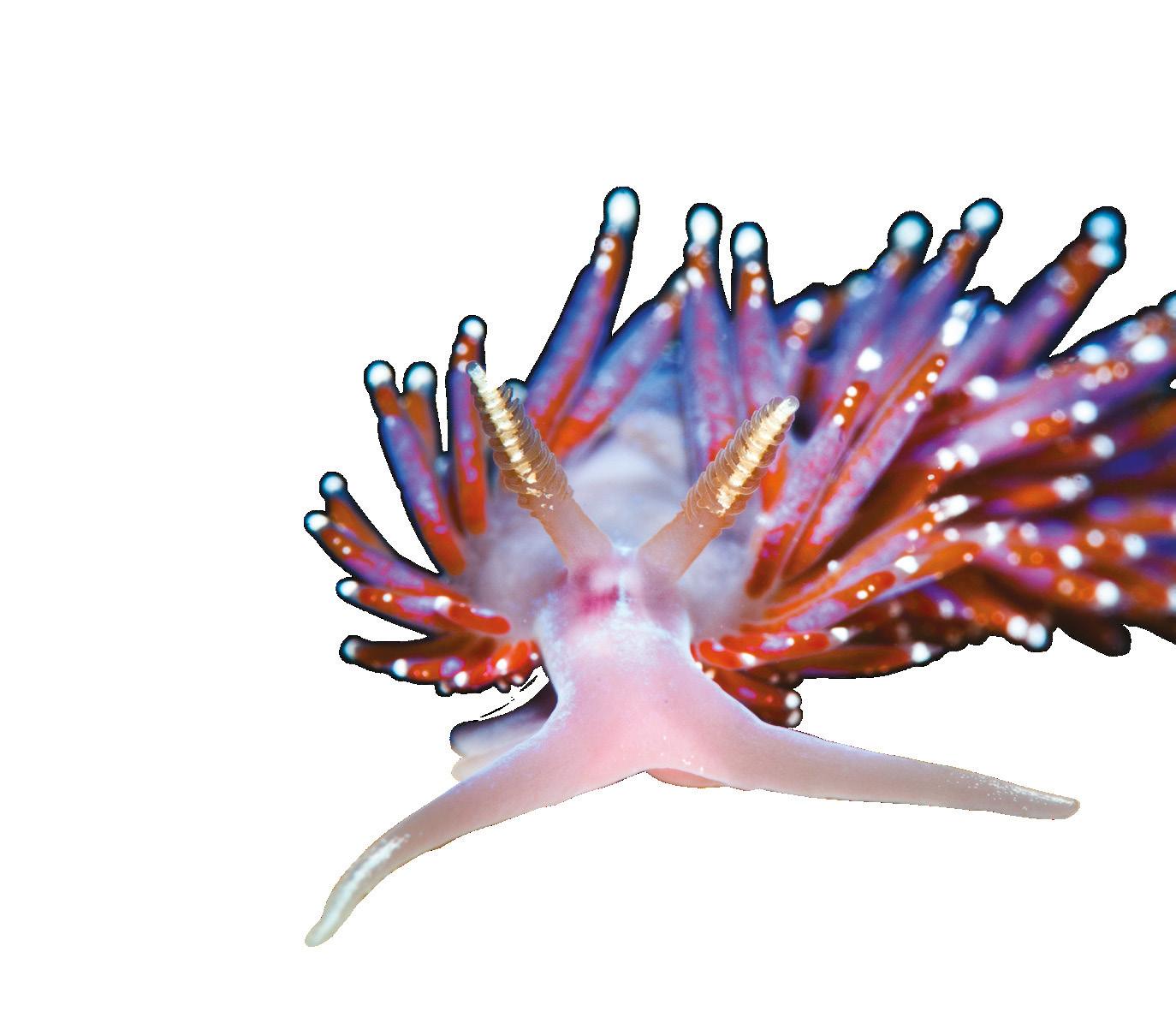
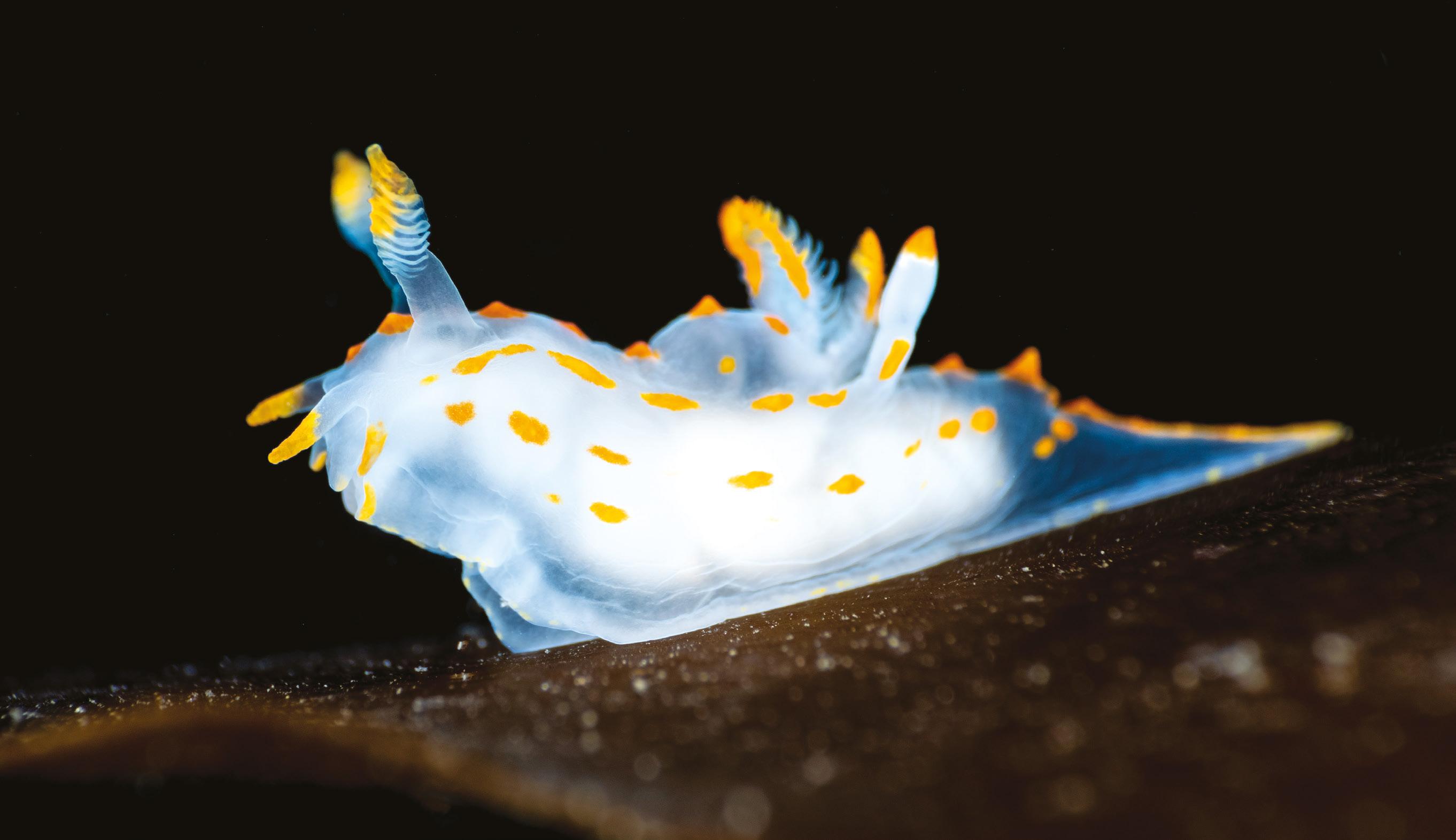
One of our most common rocky shore nudibranchs, the sea lemon (Doris pseudoargus), is a case in point. When underwater, this bumpy yellow animal unfurls a glamorous, feathery circle of honey-yellow gills on its back. Other nudibranchs, like the bright purple Edmundsella pedata, have spiky projections called ‘cerata’, providing a large surface area through which they breathe in oxygen.
Tiny Doto spp. slugs win my prize for the craziest body shape. Their white cerata, shaped like towering jelly moulds adorned with cherry-red spots, are so high that they wobble precariously. Their heads sport two tall rhinophores sheathed in a wide dish, as though they are trying to detect alien radio signals.
Amphorina spp. slugs inflate and deflate their cerata, Facelina spp. have ringed rhinophores like unicorn horns, while Polycera spp. slugs’ heads are fringed with colourful tentacles. Anything goes when you’re a nudibranch.
You are what you eat
If you are used to peaceable garden slugs, it can be unsettling to discover that nudibranchs are devout carnivores. While each species has a preferred diet, between them they eat sponges, barnacles, hydroids, anemones, bryozoans, sea squirts and more.
Some nudibranchs change colour. The sea lemon, for instance, turns into a ‘sea orange’ after eating orange sponges. Great grey sea slugs (Aeolidia spp.) dive in headfirst to feed among the treacherous stinging tentacles of anemones, their pale grey bodies and cerata often turning bright pink as they eat. Inside their cerata, great grey slugs retain the anemone’s stinging cells, which fire toxic harpoons at any predator that tries to bite them. Other slugs, like Geitodoris planata, have acid glands that burn attackers.
Most incredible of all are the Calma slugs. The vivid blue and yellow Calma glaucoides feeds on clingfish eggs, while its relation, Calma gobioophaga has cerata the shape of goby eggs, allowing it to evade the male goby’s efforts to guard its brood. The fish eggs are so efficiently digested that Calma slugs have no anus and never poo.
Slug safari
For the best chance of finding sea slugs, join an organised event or Shoresearch survey, where experts will be on hand to help you discover more. Look for pale spirals of sea slug spawn on rocks and favourite foods, but even the brightest slugs can be well camouflaged. If possible, place your nudibranch in water and watch it magically puff up. Be gentle as sea slugs are delicate. Always put the nudibranch back where it came from, leave everything as you found it and watch the tides.
Finding your first nudibranch is like discovering a sparkling gem. Their exquisite colours and eye-catching shapes make them true treasures of the rock pools.
